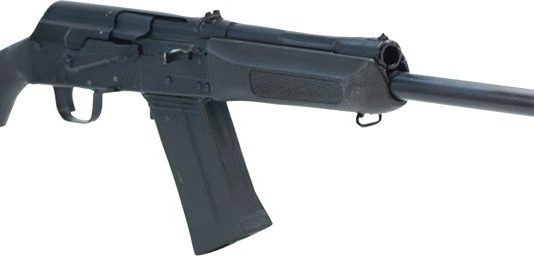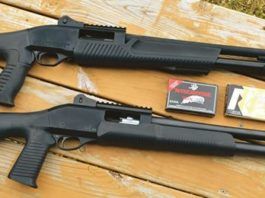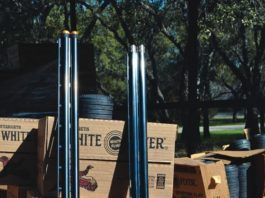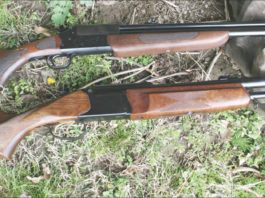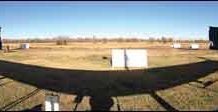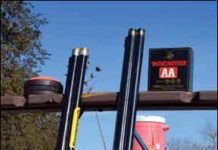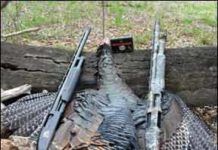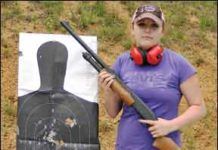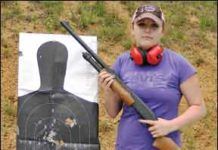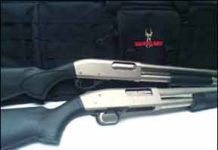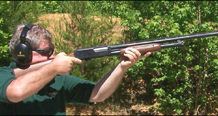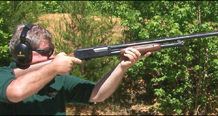UTAS-15 Pump: Wed Wait On It
UTAS-15 Pump: Wed Wait On It
12-Gauge Semi-Automatics: Benelli Ultralight Wins Again
Benelli's super-lightweight shotguns, the Ultralight line, are touted as being the lightest semi-automatic shotguns in production. Because a lighter gun does not always leave a shooter happy after a long day in the field or an afternoon shooting sporting clays, there are good reasons why shooters would prefer a heavier classic model, such as a favorite of many shooters, the Remington Model 1100. The Model 1100 was first manufactured in 1963, and with more than 50 years of production under its belt, it has earned seniority over newcomers like the Ultralight. But, because age is just a number and the new challenges the old every day, our shooters wanted to see for themselves which gun they would buy. Toward that end, we got a Benelli Ultralight Model No. 10802 12 Gauge, $1649; and Remington Model 1100 Sporting No. 25315, $1211, for this showdown.
Two Visions of the Citori O/U: The New 725 Vs. the Older XS
Turkey-Hunting Dilemma: Does A Thumbhole Give You an Edge?
For many turkey hunters, getting their hands on the right gear is almost as important as getting into the game of gotcha with a big tom. If the hunters think a new camouflage pattern, a different style of call, or an updated version of their favorite smoke pole will give them the edge over a wary tom turkey, they are all for adding the new piece of gear to their hunting ensemble.
[IMGCAP(1)]
One of the recent innovations catching the eye of more than a few hunters are shotguns featuring thumbhole stocks. This stock design lets the shooter place his or her thumb through the stock rather than wrap it over the grip, as rifle shooters have found. For scattergun enthusiasts, the concept is fairly recent and has received a relatively modest reaction.
We decided to check out two models of O.F. Mossberg and Sons Inc. turkey shotguns, one with a standard stock and one with a thumbhole stock, to see if there was a difference in performance and handling between the two popular turkey tools.
The two shotguns in our test were the Mossberg Model 500 No. 55216 Turkey THUG 12 Gauge with a suggested retail price of $409 and the Mossberg Model 500 Mossy Oak Break Up Synthetic Thumbhole Turkey pump-action 12 gauge with a suggested retail price of $493. According to Linda Powell, director of media relations for Mossberg, the thumbhole stocks are popular with steady sales, but make up a relatively small percentage of the many thousands of shotguns the company sells each year.
The various versions of standard, black synthetic, camouflage and other models of Mossberg pump-action shotguns are among the most popular firearms found in the hands of hunters across the country. It came as no surprise that the two models we put to the test lived up to the pump's reputation as a dependable and easily handling shooting tool.
As part of our handling and performance examination of the standard versus thumbhole stock, we selected several different types of popular shotgun ammunition. On the patterning board range, we used three different sizes of shot — Nos. 4, 5, and 6 — in 3-inch 1.75-ounce Winchester High Velocity Turkey Loads, all with an average muzzle velocity of 1300 fps. For overall handling and to test second- and third-shot capabilities, we switched to 2.75-inch Federal Game and Target shells loaded with 1 ounce of No. 7 1/2 shot, averaging 1290 fps at the muzzle. As noted in the comments below, recoil from the 3-inch shells in both shotguns was not particularly pleasing during the patterning tests. To reduce shoulder shock, lighter loads were brought into play for the multiple-shot review. Anyone who has spent much time touching off 3-inch shells at a patterning board can appreciate our decision. Here is our report:
Shotgun Defense Choices: We Pick Two Fiocchi Loads
Shotgun Defense Choices: We Pick Two Fiocchi Loads
Corrosion-Resistant Shotguns: Mossberg Duels Remington
Most self-defense shotguns have a few traits in common—short and maneuverable, high capacity, and simple to operate. In the dead of the night, or, increasingly, in the middle of the afternoon, you need to be able to pick up your shotgun, make it hot, and get to the spot in your house or property where you and several of your friends named Buck will treat intruders pretty ugly.
At Gun Tests, we have reviewed dozens of guns made for such unpleasantness, and our staff shooters have liked many of them, as a poke through the online archives at www.Gun-Tests.com or www.GunReports.com will show. One of the assumptions that we made in those reviews is that the guns are well maintained, which for blued steel means enough attention and love to keep them from corroding closed. But for tens of millions of Americans who live on or near coastal areas with salt air or inland on rivers or lakes with attendant high humidity, blued steel might not be the right choice. Something more inert might be better.
Toward that end, we recently acquired two shotguns made of stainless steel, nickel, polymer, and aluminum that promised, and delivered, much of what we want in a self-defense shotgun plus low, low maintenance. One was Mossberg's Special Purpose Model 500 Mariner 50273 3-Inch 12 Gauge, $571, a six-shot Marinecote-finished pumpgun with stainless barrel and aluminum receiver. We paired it against the Remington Model 870 Special Purpose Express Marine Magnum No. 25012 3-inch 12 Gauge, $772, a handsome shotgun crafted from a steel billet and all its metal parts are nickel coated, including the inside of the barrel and the receiver. There is no toehold for corrosion on this shotgun.
We gave our testers the charge of deciding which gun we'd stow in the cabin of a Hunter 50CC for an extended trip asea, or along for the ride in a bateau headed out to a fishing cabin, or tucked in the corner of the bedroom as a life insurance policy.
SuperMag Follow Up: We Retest Remingtons M887 Nitro Mag
Gun Tests reader Cecil Elmore emailed us in December 2010 with this in the subject line: 'Remington 887.' In his note, he said, 'I am a subscriber, and I saw your 2009 evaluation of the Remington 887 shotgun, which was not pretty. I am considering buying an 887, but look to you folks for expert guidance. Can you give me an update on where that 887 stands? Thanks!' Why, yes we can. The September 2009 comparison that included the new-for-2009 Remington M887 Nitro Mag No. 82500 12 Gauge, $399, pitted it against a Benelli SuperNova No. 20115 MAX-4 HD Camo 12 Gauge Pump, $599. The Benelli was the hands-down winner, with our recommendation being, 'It's built right, shoots right, and does everything we could hope for from a shotgun of this type. We don't think the 8-pound weight is excessive for a heavy-duty duck gun; the extra weight pays dividends in its smoother swing and softer shooting.' Accordingly, we awarded it an A grade.





























